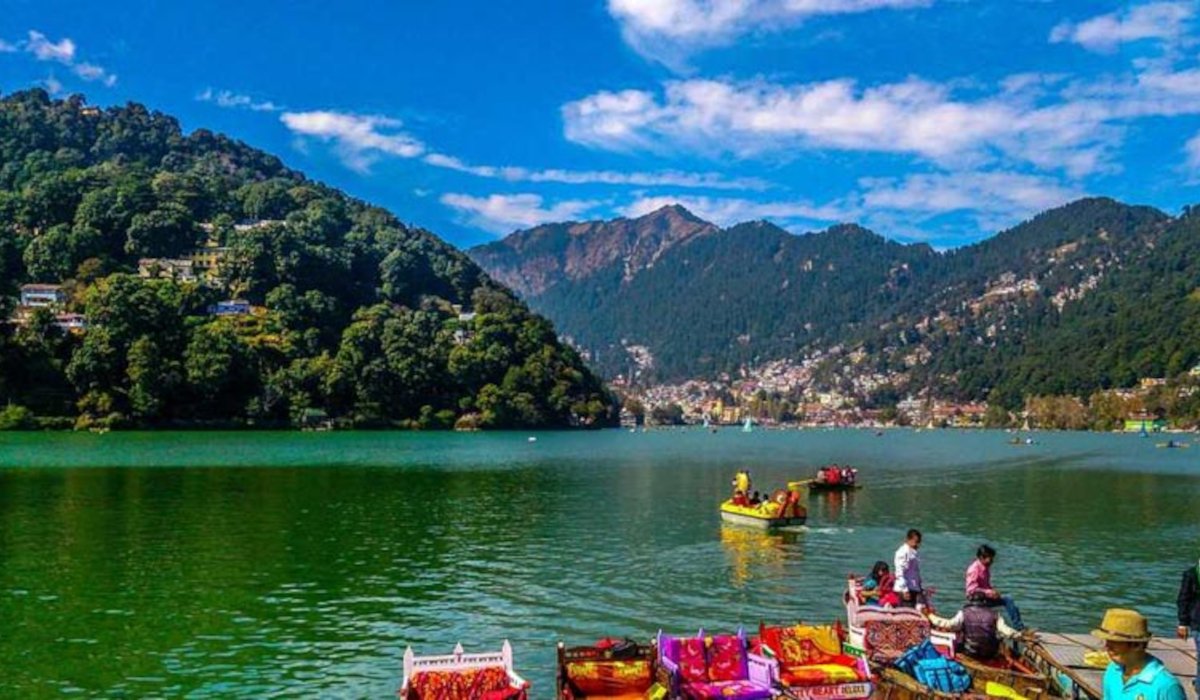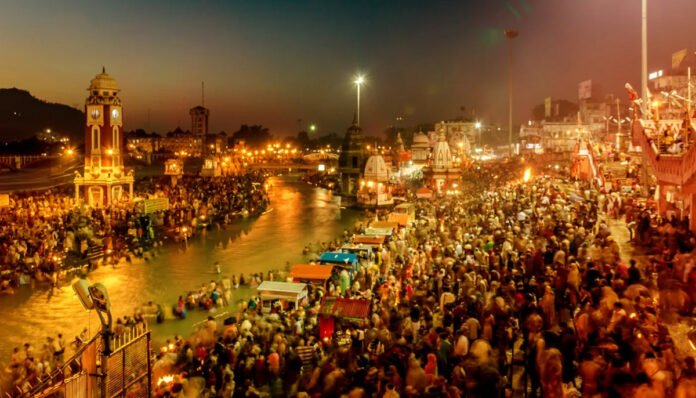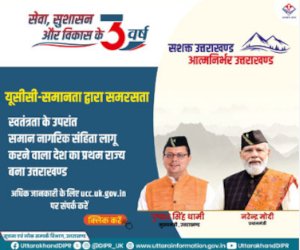The Ganga, ancient and eternal, streamed its silver ribbon through Haridwar as it always had; a spiritual artery pulsating with the rhythm of mantras and the fervour of centuries-old rituals. Mahant Raghavendra, his snow-white beard framing eyes that had seen countless sunrises, embodied this sacred continuity. For half a century he had immersed himself in the dawn dip, the precise enunciation of Vedic hymns, and the quiet guidance of pilgrims. To him, Haridwar was not merely a pilgrimage town; it was a living temple.
Yet lately, even this sanctuary had changed. The air, once suffused with incense and devotion, was now punctuated by car horns, café beats, and mobile chatter. The scent of marigold garlands mingled awkwardly with diesel fumes and instant noodles. Haridwar stood poised between tradition and transformation.
Two Pilgrims, Two Perspectives
 Rohan, a software engineer from Bengaluru, arrived bearing a quiet reverence. On the cusp of his first Char Dham yatra, he sought spiritual insight, not a checklist of shrines. Raghavendra gifted him a rudraksha bead and counselled: “Do not seek to conquer the mountains, Rohan. Understand them. Let the river cleanse your mind’s clutter.”
Rohan, a software engineer from Bengaluru, arrived bearing a quiet reverence. On the cusp of his first Char Dham yatra, he sought spiritual insight, not a checklist of shrines. Raghavendra gifted him a rudraksha bead and counselled: “Do not seek to conquer the mountains, Rohan. Understand them. Let the river cleanse your mind’s clutter.”
By contrast, Hitesh, a vlogger from Mumbai, saw Haridwar as a backdrop for her next viral hit. Her exuberant commentary:“Totally insane place… super ancient and spiritual, but also intense!” clashed with the serene sanctity embodied by Raghavendra. When confronted, he offered, “The ‘vibe’… is a silence, built over millennia. It cannot be sold.”
Tourism’s Double-Edged Growth
Uttarakhand’s tourism trajectory tells the tale of both opportunity and compromise. After hosting 39.2 million visitors in 2019, numbers have surged even higher in recent years. In 2023 alone, the state received nearly 6 crore tourists, a staggering volume that outstrips its population several times over.
This influx contributes significantly to the state’s economy: tourism accounted for 23 percent of Uttarakhand’s GDP as early as 2019. Destinations like Rishikesh, known as the “Yoga Capital of the World,” command premium rates where average hotel room rates exceed ₹10,000 per night. Pilgrimage circuits like the Chota Char Dham received over 4 million pilgrims in 2022 alone.
Yet, the repercussions are complex. Infrastructure strain, environmental degradation, and cultural dilution have become pressing concerns. Pilgrimage numbers soared from 450,000 in 2012 to over 5 million in 2023 for Char Dham, without corresponding infrastructure upgrades. The sight of overflowing waste bins, jammed highways, and fragile mountain slopes scarred by construction is now commonplace.
Silent Hills and Discordant Tunes
In the serene hamlet of Hartola in Kumaon, mornings once belonged to farmers and birds. Now, the dawn is often drowned out by bass from late-night tourists in homestays who are oblivious to the delicate rhythms of rural life. One elderly farmer lamented that tourists came seeking “peace of the mountains,” yet disrupted it irreversibly.
But then there were those rare seekers—bird-watchers, sketching artists, and families wanting simply to be enveloped by the mist—genuine pilgrims of nature, much like Rohan, who honoured the land rather than consumed it.
Raghavendra often reminded pilgrims that the true offering was humility. “The mountains are not a backdrop for your recreation. The rivers are not just for your adventure sports. They are living deities. When reverence is replaced by mere entertainment, the spirit of the place begins to wither.”
Voices from the Ground
For locals, the benefits and burdens of tourism are interwoven. Meera Rawat, who runs a small dhaba near Rishikesh, confessed: “Tourism has doubled our income in five years. My children now study in a private school. But sometimes, I wonder if the soul of this place is slipping away. Visitors come for yoga retreats and river views, but rarely for the spirit of the Ganga.”
Environmentalists echo this tension. Dr. Sanjay Kulkarni, a researcher studying Himalayan ecology, observed: “We cannot ignore the fact that six crore tourists leave a massive footprint, be it, plastic waste, vehicular emissions, and pressure on fragile water systems. The Himalayas are resilient, but not invincible. Without stronger policies, we risk eroding both ecology and culture in one sweep.”
The Fragile Balance
As Rohan prepared to depart for the mountains, he witnessed the burgeoning friction: rituals overshadowed by tourist flourish, spirit diluted by commercialisation. He understood Raghavendra’s “middle ground” not as a policy, but a call to re-learn how we engage with sacred places.
Raghavendra reflected, “The mountains have always provided, but they demand reverence. When offerings become greed, the balance breaks.” He recalled his guru: “Haridwar’s soul lies in its peace and purity. If that is lost, it will merely remain a city.”
Even in remote trekking circuits such as Kedarkantha and Chopta, plastic bottles and snack wrappers dot trails that were once pristine. The dilemma is stark: tourism sustains the local economy, yet its unchecked expansion imperils the very landscape it depends upon.
Towards Sustainable Pilgrimage
Uttarakhand’s government is not blind to these challenges. Recent plans emphasise eco-tourism, carrying-capacity assessments, and stricter waste management. Campaigns to promote homestays in villages like Hartola aim to spread the economic benefits while minimising urban-style disruption. Yet the enforcement remains uneven, often buckling under the sheer tide of visitors.
Experts argue that the solution lies in redefining tourism not as consumption but as communion. This means educating visitors to value silence, respect local customs, and tread lightly on the fragile ecosystem. It also requires political will to balance revenue with preservation—a balance easier preached than practised.
The Path Forward
Uttarakhand stands at a crossroads—its economy buoyed by tourism yet its soul endangered. With footfall seven to eight times higher than its resident population, the path ahead must be navigated with caution.
As lanterns drifted down the Ganga one evening, carrying whispered prayers into the night, Mahant Raghavendra spoke softly to Rohan: “This land is Devbhoomi—the abode of the gods. It will survive only if we remember to come as seekers, not consumers. Those who come in humility will always find grace here. Those who come only to take will find nothing but echoes.”
The dilemma remains unresolved. But perhaps, in the balance between Rohan’s reverence and Hitesh’s spectacle, lies a lesson for Uttarakhand and for all who step into its sacred embrace.





















